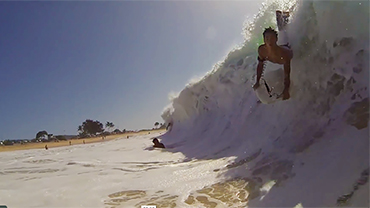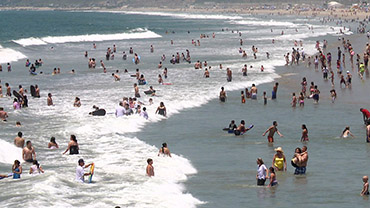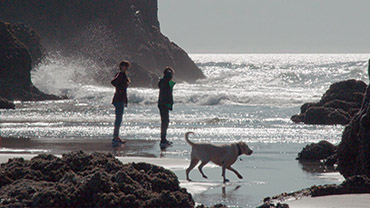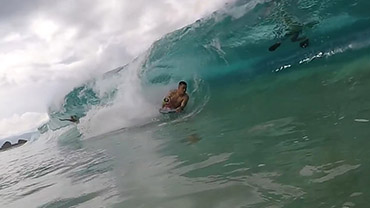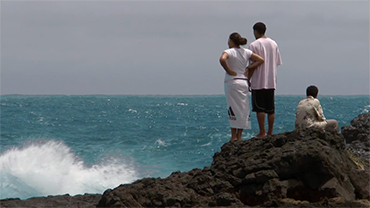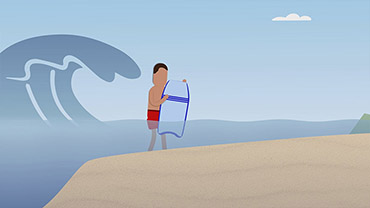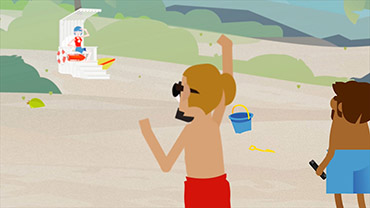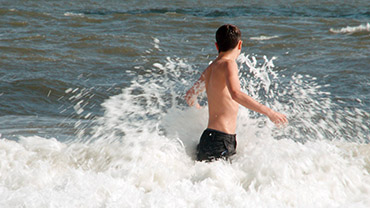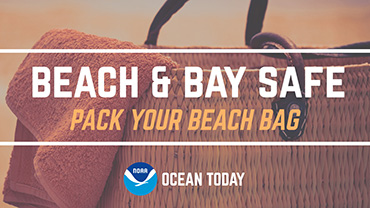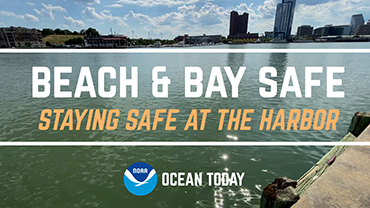Transcript
From Miami beach to Maine, East coast beaches are some of the most visited in the world, but just because they are popular doesn’t mean they aren’t hazardous.
If you want to keep your ocean and beach time fun and safe you need to be aware of dangerous waves and that starts by respecting the power of the ocean.
Even a small wave crashing against you has tremendous power. To smaller children waves that may be only knee high on an adult can be dangerous and traumatic. If you have young children keep them close when you are in the water.
Any breaking wave can be dangerous but a wave breaking directly on a steep shore, like this one, is even more likely to cause serious injuries. These conditions are called shorebreak.
Why is this type of wave so dangerous?
Imagine the weight of a car pushing down on your head, neck or back and pinning you against the sand. That is the impact a shorebreak wave can have and change your life forever.
To understand dangerous waves, it’s important to first understand what weather can do to waves. High winds from even distant storms can create larger, more threatening waves even while the weather at your beach is sunny and calm.
Another common danger you can find at any beach are waves driving you into hidden objects like shallow sandbars, jagged rocks and debris.
Before going into the water, ask a lifeguard or look for warning signs that may indicate submerged dangers.
The best way to always stay wave safe is to choose guarded beaches. Lifeguards are trained to help if you get in trouble and they’re the best source of information about beach conditions and hazards.
Many lifeguard stands display colored warning flags to indicate the level of danger on that section of beach.
If the beaches in your area are not guarded watch for warning signs near the shore and ask your local host or guides about hazards in the area that could make the waves and water more dangerous.
But to be even safer, you should arrive knowing the local weather, surf and tide forecasts for the beach you are visiting.
Go to NOAA’s Beach Forecast page for more information.
Don’t assume you know the beach conditions just because you regularly visit a certain beach.
Weather and water conditions can change in a matter of minutes and the tides are constantly changing..
Low tides create shallow water conditions where large waves crash over sandbars and submerged rocks, which can be dangerous if you don’t see them.
Watching the waves from higher up on the beach, for up to fifteen minutes, will give you the best read on current conditions.
Any size wave can look far less dangerous from the beach than they will feel once you are in the ocean.
If things look even a little scary from shore then swimming back to the beach can be worse. Even the most experienced ocean athlete knows: If in doubt, don’t go out.
Now that you know how to be aware of conditions at the beach, let’s talk about how to move in and out of the water so you are not hurt by the power of the waves.
In knee to thigh deep water turn your hips and shoulders sideways to keep your balance as you slice through the force of the waves with one foot planted behind you to brace against the wave.
In water above your waist the safest place is under and not over the whitewater of breaking waves. Face the oncoming wave and duck, don’t dive, putting your head down and fingers in the sand below.
If you are paddling, swimming or walking back to the beach, never completely turn your back on the waves. Use the same methods you used to get into the water as you return to the beach. You aren’t safe until your feet are on dry sand.
We love all our coastlines and want you to have a lifetime of great beach experiences. To have fun and to stay safe always respect the power of the ocean and be wave safe.
Transcripción
Desde Miami Beach hasta Maine, las playas de la costa este son de las más visitadas del mundo, pero solo porque sean populares no significa que no sean peligrosas.
Si quiere que su tiempo en el océano y la playa sea divertido y seguro tiene que estar atento al oleaje peligroso, y eso comienza por respetar el poder del océano.
Incluso una ola pequeña rompiendo sobre usted tiene una fuerza tremenda. Para los niños pequeños, las olas que solo le llegan a la altura de la rodilla a un adulto pueden ser peligrosas y traumáticas. Si tiene niños pequeños, manténgalos cerca cuando esté en el agua.
Cualquier ola puede ser peligrosa, pero una ola que rompe directamente sobre una orilla escarpada, como esta, tiene aún mayor probabilidad de causar heridas graves. A estas condiciones se les denomina olas rompientes en la orilla.
¿Por qué es tan peligroso este tipo de ola?
Imagínese el peso de un automóvil empujando sobre su cabeza, cuello o espalda y aplastándole contra la arena. Ese es el impacto que una ola rompiente en la orilla puede tener, y le puede cambiar la vida para siempre.
Para entender a las olas peligrosas, es importante primero conocer cómo puede afectar las condiciones del tiempo al oleaje. Los vientos fuertes incluso de tormentas lejanas pueden crear olas más grandes y peligrosas incluso cuando el tiempo en su playa sea soleado y tranquilo.
Otro peligro común que se puede encontrar en cualquier playa son olas que le empujan contra objetos escondidos tales como bancos de arena, rocas y escombros.
Antes de entrar en el agua, pregunte a un salvavidas o busque las señales de advertencia que le puedan indicar peligros sumergidos.
La mejor forma de mantenerse seguro del oleaje es escoger playas vigiladas. Los salvavidas están entrenados para ayudar si se encuentra en peligro y son la mejor fuente de información sobre condiciones y peligros en la playa.
Muchas casillas de salvavidas exhiben banderas rojas de advertencia para indicar el nivel de peligro en esa sección de la playa.
Si las playas en su área no están vigiladas, preste atención a las señales de advertencia y pregúntele a su anfitrión o a guías locales sobre los riesgos en la zona que pueden hacer que las olas y el agua sean más peligrosas.
Pero para estar aún más seguro, debe llegar conociendo el pronóstico del tiempo, el oleaje y la marea para la playa que está visitando.
Visite la página de Pronóstico de la Playa de NOAA (por sus siglas en inglés) para más información.
No asuma que conoce las condiciones de la playa solo porque la visita regularmente.
Las condiciones del tiempo o el agua pueden cambiar en cuestión de minutos, y las mareas están cambiando constantemente…
Las mareas bajas crean condiciones de agua poco profunda donde las olas grandes rompen sobre los bancos de arena y rocas sumergidas, que pueden ser peligrosos si nos los ve.
Observar el oleaje desde un punto más elevado en la playa durante quince minutos le dará mayor conocimiento sobre las condiciones actuales.
Cualquier tamaño de ola puede parecer mucho menos peligrosa desde la playa que cuando está dentro del océano.
Si las cosas se ven incluso un poco asustadizas desde la orilla, entonces nadar de vuelta a la playa puede ser peor. Hasta los atletas más experimentados con el océano saben: si tiene dudas, no salga.
Ahora que sabe cómo estar atento a las condiciones en la playa, hablemos de cómo entrar y salir del agua para evitar ser lesionado por la fuerza de las olas.
En agua que le llega a la altura entre la rodilla y el muslo, gire sus caderas y hombros de lado para mantener el equilibrio mientras corta la fuerza de las olas con un pie plantado detrás suyo para enfrentar la ola.
En agua más profunda que la altura de su cintura, el lugar más seguro es por debajo y no por encima de la espuma de las olas rompientes. Mire la ola de frente y agáchese (no se tire), poniendo su cabeza hacia abajo y los dedos en la arena.
Si está remando (practicando paddle surf), nadando o caminando de vuelta a la playa, nunca dé la espalda por completo a las olas. Utilice los mismos métodos al regresar a la playa que al entrar en el agua.
Amamos todas nuestras costas y queremos que tenga toda una vida de excelentes experiencias en la playa. Para divertirse y mantenerse seguro, siempre respete el poder del océano y manténgase a salvo de las olas.
 An official website of the United States government.
Here's how you know we're official.
An official website of the United States government.
Here's how you know we're official.


